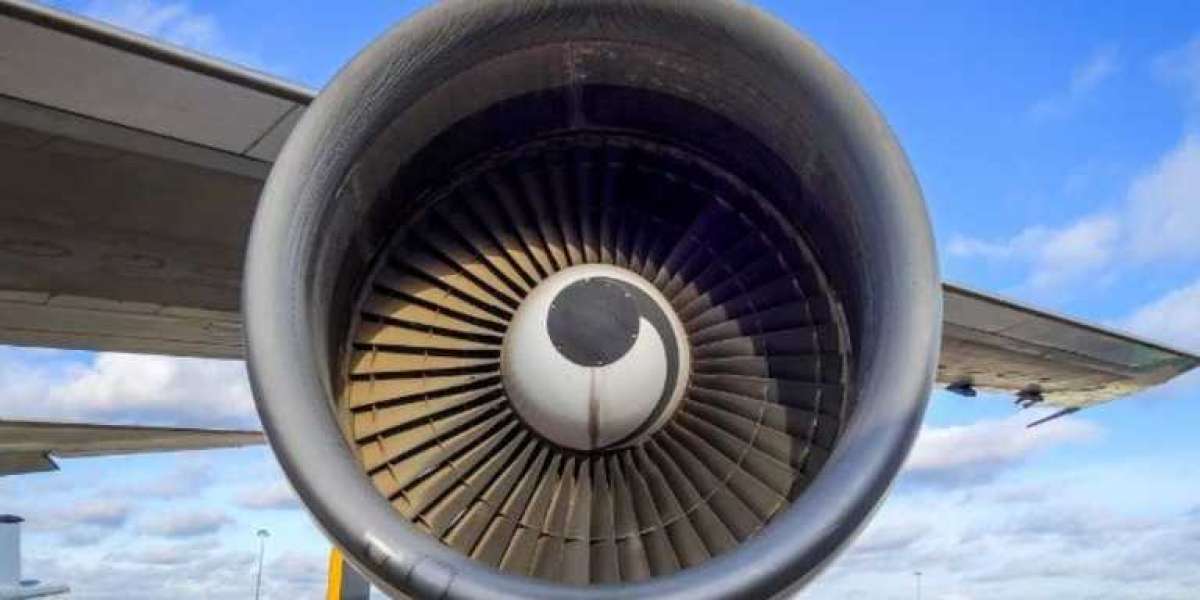The aviation high-speed motor market has been witnessing remarkable growth driven by increasing advancements in aviation technologies, a growing emphasis on lightweight and efficient propulsion systems, and the shift toward electric and hybrid-electric aircraft. High-speed motors are integral in powering aircraft systems such as propulsion, auxiliary power units, and more. These motors offer high efficiency, reliability, and lightweight designs, making them essential for the evolving needs of the aerospace industry.
The global Aviation High Speed Motor Market Size is projected to grow at a CAGR of 5.5% from 2024 to 2032, underpinned by growing investments in greener aviation technologies and the increasing adoption of high-performance motors in unmanned aerial vehicles (UAVs) and commercial aircraft.
Key Benefits of Aviation High-Speed Motors
- Enhanced Efficiency: High-speed motors deliver exceptional efficiency, reducing energy consumption and operating costs.
- Lightweight Design: Their compact and lightweight build contributes to overall aircraft weight reduction, improving fuel efficiency.
- Durability and Reliability: These motors are designed to withstand high stress and extreme conditions, ensuring consistent performance.
- Adaptability for Electric Propulsion: High-speed motors support electric and hybrid propulsion systems, aligning with the industry's move toward sustainable aviation.
- Precision Control: These motors allow precise speed and torque control, essential for advanced flight dynamics and manoeuvrability.
Key Industry Developments
- Adoption of Electric Aircraft: The rise of electric vertical take-off and landing (eVTOL) aircraft has spurred the demand for lightweight, efficient motors.
- Innovations in Motor Design: Companies are developing motors with higher torque densities and optimised cooling systems for enhanced performance.
- Government Initiatives: Regulatory bodies are supporting sustainable aviation solutions, accelerating RD investments in high-speed motors.
- Integration with Advanced Materials: The use of advanced composites and materials for motor components is reducing weight while increasing operational life.
Driving Factors
- Demand for Fuel Efficiency: Rising fuel costs and stricter emissions regulations push the industry towards high-speed motors for better fuel economy.
- Growing Electric Aircraft Market: The rapid adoption of electric and hybrid-electric aircraft is boosting demand for compatible high-speed motors.
- Technological Advancements: Innovations in high-speed motor design, including improved cooling and insulation systems, drive market growth.
- Increased UAV Deployment: Expanding applications of UAVs in defence and commercial sectors fuel the need for advanced propulsion systems.
Restraining Factors
- High Development Costs: The RD expenses for high-speed motor technology can be a barrier for smaller manufacturers.
- Complex Integration Processes: The integration of these motors into aircraft systems requires sophisticated technology and expertise.
- Material Limitations: The availability and cost of advanced materials, such as rare-earth magnets, can pose challenges.
- Regulatory Compliance: Meeting stringent aviation safety and emissions standards can delay product development and deployment.
Market Segmentation
By Motor Type:
- AC Motors: Widely used for their efficiency and robustness in propulsion systems.
- DC Motors: Preferred for precision applications such as auxiliary systems.
By Aircraft Type:
- Commercial Aircraft: Dominates the market due to increased air travel and fleet expansion.
- Military Aircraft: High demand for UAVs and combat aircraft drives this segment.
- Electric Aircraft: Growing focus on sustainable aviation solutions boosts this segment.
By Application:
- Propulsion Systems: The largest segment, driven by the need for efficient thrust mechanisms.
- Auxiliary Power Units (APUs): Rising use of electric APUs contributes to this segment's growth.
- Other Applications: Includes flight control systems and landing gear operations.
Market Outlook
The aviation high-speed motor market holds promising growth potential, supported by the growing push for electrification in aviation and increasing RD investments in energy-efficient systems. As electric and hybrid-electric aircraft gain traction, manufacturers are focusing on developing lightweight, high-performance motors that meet stringent aviation standards. Emerging markets in Asia-Pacific and the Middle East are expected to offer lucrative opportunities due to rising investments in aviation infrastructure and technological advancements.
Trends
- Miniaturisation of Motors: Development of smaller yet powerful motors to cater to UAVs and compact aircraft systems.
- Integration with AI and IoT: Motors are being equipped with smart sensors for predictive maintenance and real-time performance monitoring.
- Focus on Sustainability: Increasing preference for motors that are energy-efficient and made from recyclable materials.
- Collaborations and Partnerships: Strategic alliances between motor manufacturers and aviation companies to accelerate innovation.
Regional Analysis/Insights
North America
- Market Leader: Driven by technological advancements and the presence of key players.
- Focus Areas: Electric aircraft and UAV applications.
Europe
- Sustainability Focus: Strong emphasis on reducing emissions and advancing hybrid-electric propulsion.
- Key Players: Established aerospace companies are leading in RD investments.
Asia-Pacific
- Emerging Markets: Rapid aviation growth in countries like China and India.
- Challenges: High import dependency for advanced motor technologies.
Middle East and Africa
- Infrastructure Growth: Rising aviation investments create demand for advanced motors.
- Opportunities: Development of regional manufacturing capabilities.
Analysis
The aviation high-speed motor market is dynamic, driven by technological advancements and evolving aviation demands. However, challenges such as high costs and regulatory compliance continue to impact market dynamics. Industry stakeholders are focusing on innovation and strategic collaborations to address these challenges and tap into emerging opportunities.
News
- Rolls-Royce Collaborations: Partnerships with electric aircraft companies for high-speed motor development.
- Government Funding: Increased support for sustainable aviation initiatives in the US and Europe.
- New Product Launches: Companies introducing high-speed motors with enhanced cooling systems and higher power densities.
Top Impacting Factors
- Technological Innovations
- Fuel and Emissions Regulations
- Expanding UAV Applications
- Cost Pressures
Target Audience
- Aircraft Manufacturers
- Aviation Engineers and Technologists
- Defence Organisations
- RD Institutes
- Electric Aircraft Developers
Major Key Players
- Xoar International LLC
- EMRAX d.o.o.
- Windings, Inc.
- Meggitt PLC
- H3X Technologies Inc.
- MGM COMPRO
- Others
Opportunities
- Emerging Markets: Expansion in regions like Asia-Pacific and the Middle East.
- Hybrid-Electric Aviation: Opportunities in propulsion system upgrades.
- Advanced Material Integration: Development of motors using innovative materials for enhanced performance.
Challenges
- Cost of Innovation: High RD expenses in motor technology.
- Regulatory Barriers: Complex compliance requirements in aviation.
- Supply Chain Dependencies: Dependence on rare materials like rare-earth magnets.
Restraints
- High manufacturing costs and material limitations.
- Regulatory compliance hurdles.
- Limited expertise in integrating high-speed motors into existing aircraft systems.
Scope
The aviation high-speed motor market will play a pivotal role in shaping the future of sustainable and efficient aviation. With growing adoption in electric aircraft, the demand for lightweight, high-efficiency motors is expected to remain robust. Manufacturers focusing on technological innovations and strategic partnerships are well-positioned to capitalise on this evolving market.







